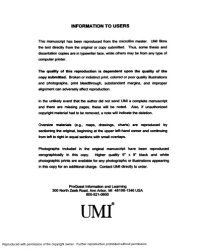
Ebook: In our own image: Modern historical novels of the late Middle Ages and Renaissance
Author: Mark Benner Spencer
- Year: 2001
- Publisher: University of Arkansas
- Language: English
- pdf
Historical novels have proven a highly popular literary genre over the last two centuries, but they have never attained full academic respectability. The principal theoretical work remains Georg Lukács' The Historical Novel (1927), although both his method and conclusions are rather problematic. The other comprehensive studies are mostly in French and German, although a number of British and American scholars have addressed a handful of the more canonical novels in English, primarily from the nineteenth century. Recent postmodern experiments in the historical novel, however, have reinvigorated critical interest in the genre.
The purpose of this dissertation is first to gather together and critically synthesize this material in a more accessible form, and secondly to examine a select group of representative historical novels set during the late Middle Ages and Renaissance. The opening chapter presents a brief history of the criticism on historical novels in the light of Lukács' theoretical approach. Subsequent chapters address other theoretical and critical issues such as definition, typology, anachronism, and periodization, and the balance between history and fiction. The individual novels chosen for analysis include works by Sir Walter Scott, Charles Reade, Sigrid Undset, Pär Lagerkvist, George Garrett, and Eva Figes.
The essential thesis of the dissertation is that Lukács was simply wrong in his assessment of the genre. While the nineteenth century undoubtedly witnessed the triumph of realism in novels of contemporary life, Scott revivified romance as the appropriate narrative mode for historical fiction. It was not until the first decades of the twentieth century that a new effort to recreate the authentic mental universe of the past finally established the same standards of realism for the historical novel as set for contemporary novels a century before. Recent postmodern experiments in historical fiction have challenged the assumptions and techniques of the realist novel, although their purpose is not another retreat into romance, but rather an even greater determination to engage genuine historical experience through irony, multiplicity, and empowering previously marginalized voices. In the end, however, perhaps the historical novel of any era can do little more than recreate the past in its own image.
The purpose of this dissertation is first to gather together and critically synthesize this material in a more accessible form, and secondly to examine a select group of representative historical novels set during the late Middle Ages and Renaissance. The opening chapter presents a brief history of the criticism on historical novels in the light of Lukács' theoretical approach. Subsequent chapters address other theoretical and critical issues such as definition, typology, anachronism, and periodization, and the balance between history and fiction. The individual novels chosen for analysis include works by Sir Walter Scott, Charles Reade, Sigrid Undset, Pär Lagerkvist, George Garrett, and Eva Figes.
The essential thesis of the dissertation is that Lukács was simply wrong in his assessment of the genre. While the nineteenth century undoubtedly witnessed the triumph of realism in novels of contemporary life, Scott revivified romance as the appropriate narrative mode for historical fiction. It was not until the first decades of the twentieth century that a new effort to recreate the authentic mental universe of the past finally established the same standards of realism for the historical novel as set for contemporary novels a century before. Recent postmodern experiments in historical fiction have challenged the assumptions and techniques of the realist novel, although their purpose is not another retreat into romance, but rather an even greater determination to engage genuine historical experience through irony, multiplicity, and empowering previously marginalized voices. In the end, however, perhaps the historical novel of any era can do little more than recreate the past in its own image.
Download the book In our own image: Modern historical novels of the late Middle Ages and Renaissance for free or read online
Continue reading on any device:

Last viewed books
Related books
{related-news}
Comments (0)